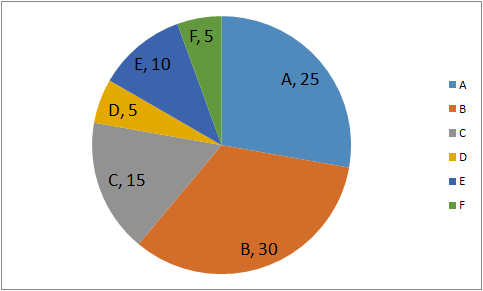1.
Students from different countries (A, B,C,D, E, F) participated in a certain seminar. The pie chart shows how many students came from each of the six participating countries. Study the diagram and answer the following questions.
 The biggest contingent of students was from which country?
The biggest contingent of students was from which country?
Show Similar Question And Answers
 Powered By:Omega Web Solutions
Powered By:Omega Web Solutions